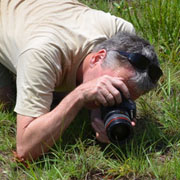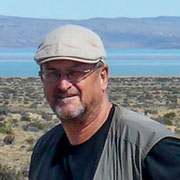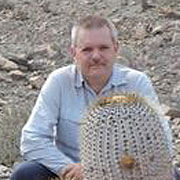Programme 9-10-11 September 2022
-
Day 1
-
Plant sales
-
Opening and lecture
Rikus van Veldhuisen
Netherlands

Uitdagend Zambia (nl)
Zambian challenges
Like many of us, I started growing succulents in my childhood, during the cactus boom, in those brightly coloured plastic pots in front of my bedroom window. During a visit to the cactus greenhouse in the Flevohof, a world opened up to me. Plants did much better in a greenhouse and there was also an enthusiasts' association called 'Succulenta'. That greenhouse was built pretty quickly and at the many plant sales, I bought all kinds of things. Pretty soon I found out that there was a big difference between the various genera and species in growth rate and life span. The wealth of shapes of the genus Euphorbia fascinated me from the start, and especially through my many visits to Jaap Keijzer, more and more euphorbias came into my greenhouse. They did well and there are many of them, so in the course of time many other genera had to make room in my greenhouse. The euphorbias continue to fascinate, for almost 40 years now. This is partly due to the many levels in the hobby: propagating, photographing, travelling to the places where they are found, writing articles and, most importantly, the contacts with fellow enthusiasts..
It is not the most obvious choice to visit Zambia for seeing succulents in nature. For sure, there are advantages too to travel Zambia, like the friendly people, reasonable accommodations and of course the African sun. But the landscape is monotonous without high mountain ranges and deep valleys with sightseeing spots. On top of that the number of succulents, occurring naturally in Zambia, is limited when compared to for instance South Africa or Madagascar and the localities where they grow are far apart and can only be reached by long and sometimes very bad roads. Whole areas, where in the past interesting collections were made, are now densely populated and totally built over like the Copperbelt. Above reasons made that Zambia has not been visited by many lovers of succulent plants. But many of the ones which are growing there are very appealing plants and are amongst the most rare and appealing ones. Also there are still places to be found where no or very few people from the western world ever have set foot and where new discoveries are waiting. Enough reason to travel Zambia and take the challenge. End of November 2021 Bohuslav Uhlir, Petr Pavelka and undersigned took off for a three weeks trip to travel the north-west as well the north-east of Zambia. This proved quite a challenge as it meant there would be at least 6000 kilometre to be discarded. When having only good roads it is already a fair distance, but with parts taking 9 hours to travel 240 kilometre with the last half 7 hours, it is even more. An extra challenge was of course the present pandemic. We were one hour in Zambia when we heard for the first time of the Omicron variety. Flight were rapidly delayed to half of January of completely cancelled. Our flight company seemed however to keep on flying and we decided to stick to our plan. After a week we had to rebook our flights to a few days later, which thereafter was cancelled. With new tickets bought we in the end got home without much problems also because we all 3 were tested negative. But to make the balance in the end, it was all more than worth. About half of the euphorbia growing in Zambia is growing near a waterfall and often also a species only at that one and single spot. Without exception we were the only visitors at these places like paradise. We saw Euphorbia speciosa at Chisimba Falls, Euphorbia fanshawei at Ntumbachushi Falls and Monadenium discoideum at Nyambwezu Falls. Other enigmatic species we managed to find are Euphorbia mwinilunguensis, E. platyrrhiza, Monadenium nervosum and Adenia erecta, just to name some of them. Despite, or perhaps thanks to, this all we felt very privileged we were able to make this trip, some very few people from the western world ever did.
-
Cafetaria
Social gathering
-
Day 2
-
Plant sales
-
Lecture
Due to unforeseen circumstances, the lecture "Kakteenstandorte in Paraguay - nicht nur Gymnocalycien" by Volker Schädlich will be replaced by the following lecture by Norbert Sarnes.
Norbert Sarnes
Geremany

Where the North Meets the South - The Argentine Provinces of Mendoza and Neuquén (de)
Cactus Sites in Paraguay - not only Gymnocalyciums
In the last 15 years, together with my wife, I have spent more than a year in Argentina and Chile to see cacti. We have presented the results of these trips in many articles, several books and numerous lectures.
In search of cacti, many cactus lovers travel mainly to the north of Argentina, other tourists visit the south of Patagonia to see the wild landscapes there. This lecture now introduces the two provinces of Mendoza and Neuquén, where Cuyo meets Patagonia. There is much to discover there, especially for cactus lovers. You will see well-known and previously unknown cacti, but also beautiful landscapes, animals and other plants.
-
Meeting International Euphorbia Society
-
Lecture
Gérard Alibert
France

Les Uncarinas de la Grande Ile (fr)
The Uncarinas of the Big Island
My passion for succulents began in 1971 with the purchase of a few cacti and my membership in the early days of the AIAPS with the late Marcel Kroenlein and François Falco, pillars of French succulent gardening. Since then, I have always grown succulents with a particular affinity for Adeniums and Uncarinas.
As far as Uncarinas are concerned, I discovered them in 1995 during a humanitarian mission in the south of Madagascar. For 3 weeks, we moved from village to village to treat the local population. During these trips, I was able to discover some specimens of this genus in situ which left me with an unforgettable souvenir. I also met the botanists Herman Petignat and Raymond Gerold who taught me a lot about the vegetation of Madagascar. Afterwards, I went back to Madagascar three more times with my wife, going up the west coast.
Uncarina is an endemic genus of 14 species, all of which are found in the dry vegetation zones of the north, northwest, southwest and south of Madagascar. In my lecture I will discuss:
- The location of the species and the ecology of their biotope,
- The key to determining the species,
- Cultivation in pots and in the open ground, I grow the 14 Uncarinas in the greenhouse in the open ground,
- The hybrids,
- Propagation, seedlings, cuttings, and grafts,
- The iconography of leaves, flowers, and fruits. -
Lecture
Ian Woolnough
UK

Travels in cactus country (en)
Ian Woolnough’s interest in cacti started as a teenager with an interruption whilst away at college getting a degree in Geology and Cartography which led to his first full time employment in Fiji. On returning to England he was able to get back into the hobby and whilst working in Cartographic consultancies and then becoming the Development Manager for the National Points of Interest database he held various roles in the BCSS at branch level. A number of his pictures have been used in the BCSS calendar, in cactus books and he has also written over a dozen articles for the BCSS journal “CactusWorld”. Since 2002 Ian has been on the speakers list and has given over 190 talks to over 30 BCSS branches as well as speaking at various conventions, including overseas and for garden and other cactus clubs. He has attended ELK every year since 1998. Seeing plants in habitat is a special privilege he has been fortunate enough to be able to indulge in and on totting up his time spent on cactus trips he realised he has been in habitat looking at plants over a year! Having taken the opportunity of voluntary redundancy he is now installed in Norfolk, at what was Eau Brink cactus nursery, where he is attempting to grow and propagate plants on an even bigger scale than he was able to previously!
Having been fortunate enough to have travelled to various cactus habitats this presentation is a light hearted look at some of the highlights encountered. These are not only the fantastic plants but also the wildlife, scenery and eclectic occurrences that one stumbles across. Unfortunately because of time constraints it has been necessary to be fairly selective so not everything will be included that it would be nice to see however there should be a good range of the beautiful, weird and wonderful! We’ll start off in the United States of America where Pediocactus and Sclerocactus can be found and then work our way south through Baja California a part of Mexico rich in both Cacti and other succulents, onto mainland Mexico with its fantastic range of plants then into the Caribbean to quickly visit Antigua before heading south of the equator to Peru with its Matucanas, Argentina with its Gymnocalyciums, amongst others, and finally to Chile for Copiapoas and Eriosyce especially. Plants vary from miniatures to giants and grow from beaches to mountain tops and from sand to snow and hopefully there will be something of interest for everyone?
-
Cafetaria
Social gathering
-
Day 3
-
Plant sales